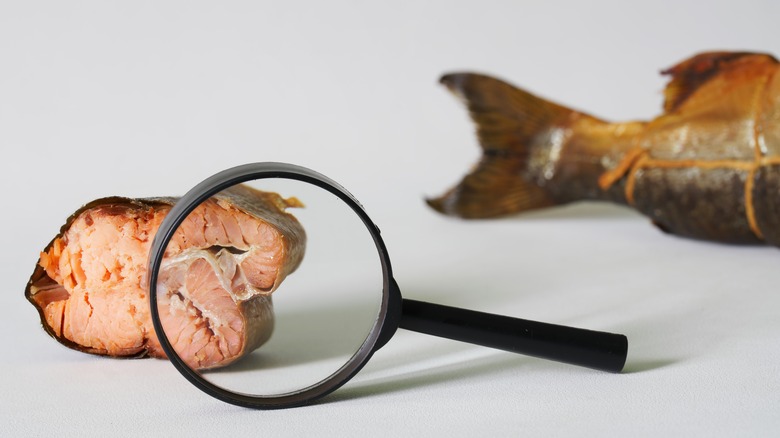These Are The Signs Your Salmon Has Gone Bad
Incorporating seafood into your diet is an excellent way to improve your overall health. According to Seafood Nutrition, eating seafood twice a week narrows the risk of death from any health-related condition by a whopping 17% thanks to its makeup of healthy fats. From shellfish like oysters, clams, and scallops to freshwater fish like catfish and trout, there are abundant options for selecting a seafood dish that suits your personal tastes.
Among the countless options, one of the healthiest fishes available to the market is salmon. Not only is the fatty fish one of the most nutritious seafood offerings, but according to Healthline, it's one of the healthiest foods on the planet in general. Regularly consuming salmon can lower your risk of heart disease, support bone health, prevent muscle loss, promote weight loss, and much more. However, consuming spoiled salmon can cause food poisoning leading to unpleasant symptoms like nausea, abdominal pain, fever, fatigue, and endless trips to the bathroom (per Family Doctor). In order to avoid food-borne illness, it's important to properly store your salmon and familiarize yourself with the signs of spoiled salmon.
Use your eyes and nose to determine if your salmon has gone bad
Unless you plan to consume the fish within one to two days, you should always freeze your salmon to preserve its flavor, texture, and nutritional value. Unfortunately, when salmon is left refrigerated rather than frozen, it goes bad within one to two days (per Livestrong). However, according to the USDA, when salmon is frozen, it lasts up to eight months.
If you do choose to refrigerate your salmon and it's been over 24 hours since purchasing, there are some red flags to look for in order to determine if your salmon has gone bad. According to Livestrong, a spoiled salmon filet can reek of ammonia, appear squishy in texture, and may have an ill-colored hue to its flesh. Once cooked, salmon lasts for up to four days when safely stored in a moisture-proof container and refrigerated. If you're nearing the end of the USDA's four-day consumption recommendation, look for signs of spoilage marked by sour smells and slimy texture. On the other hand, a healthy salmon cut boasts a rich pink or orange complexion, is firm in texture, and is marked with distinct white lines.
Avoid letting your salmon go bad so that you can enjoy all the wonderful benefits it has to offer.

